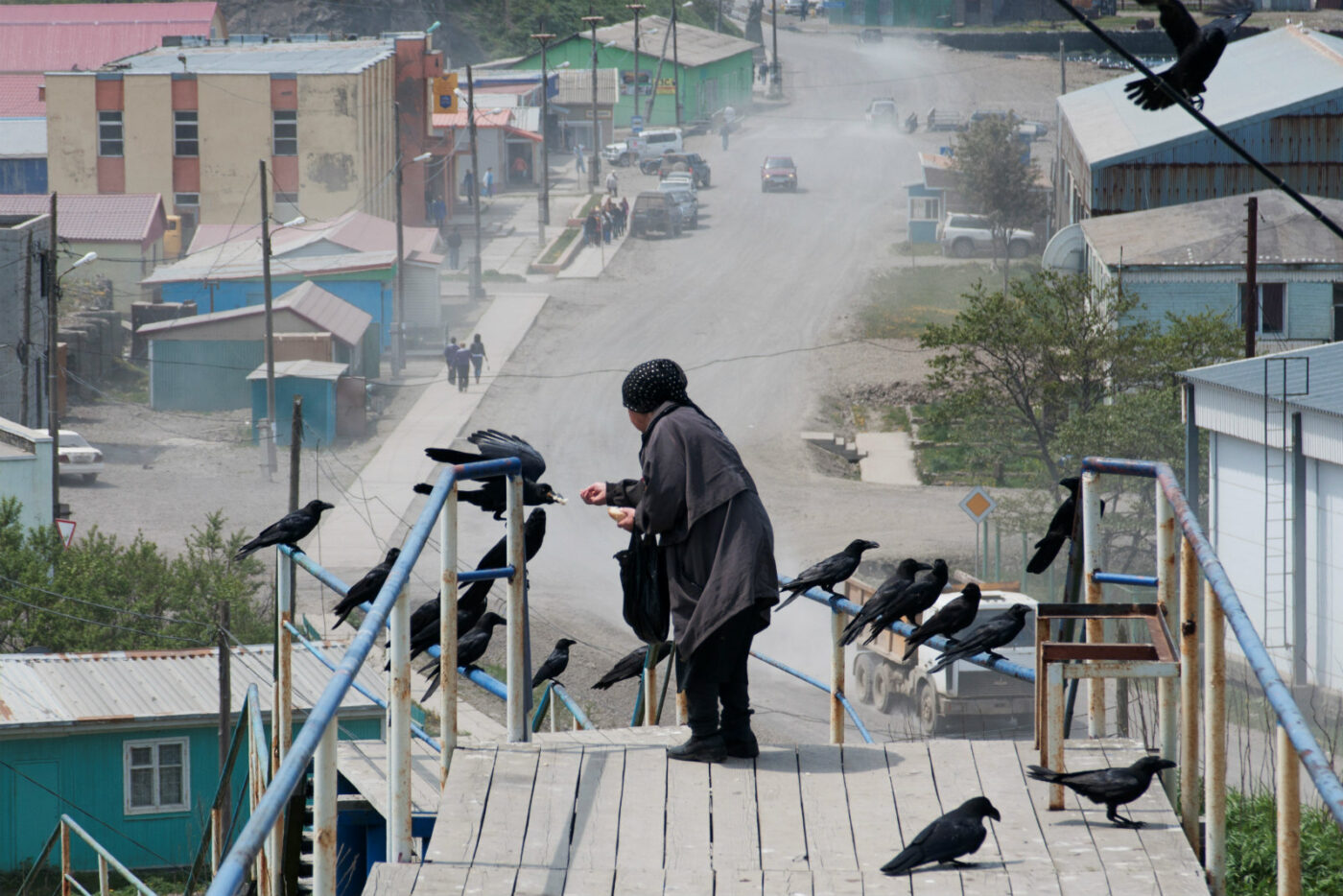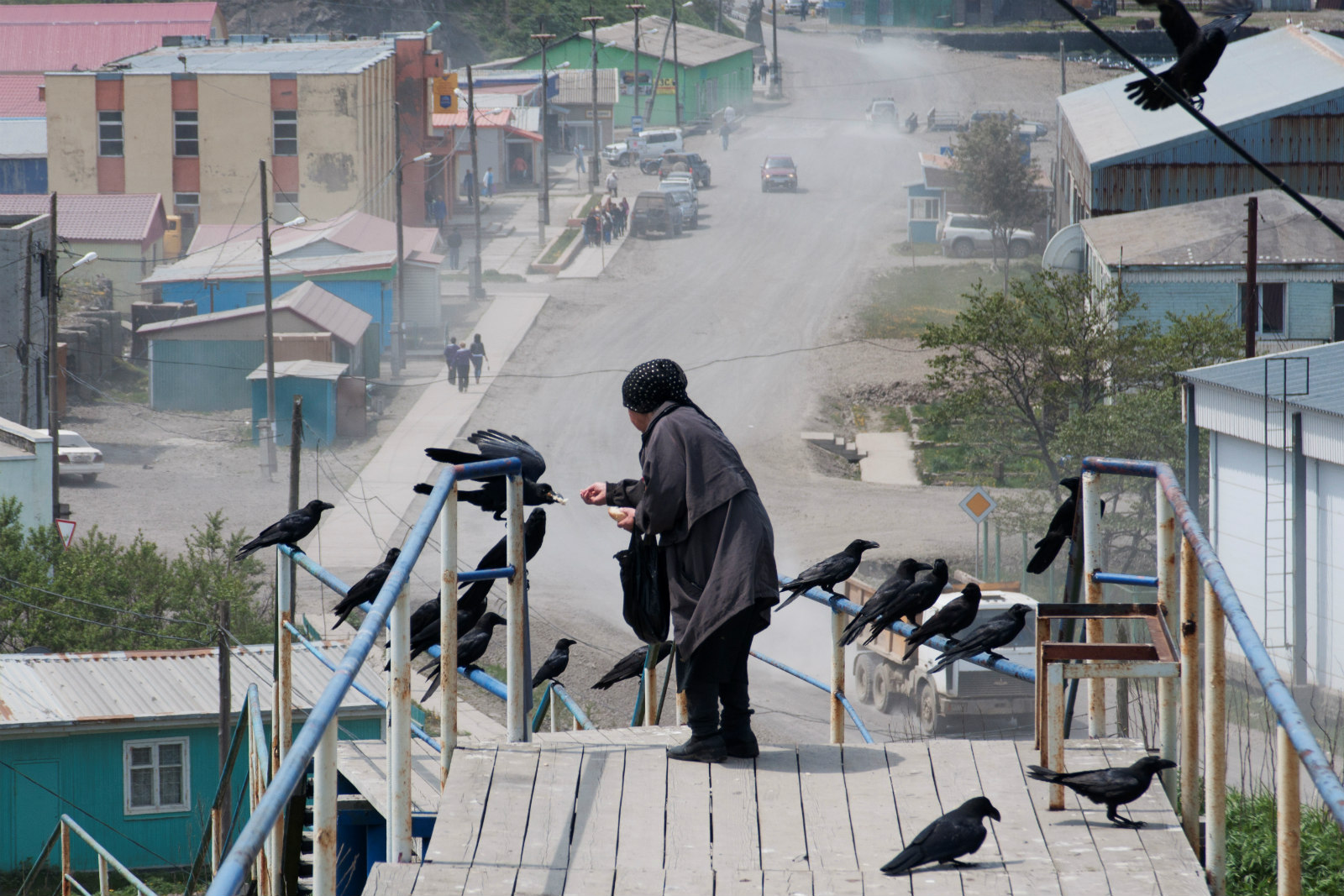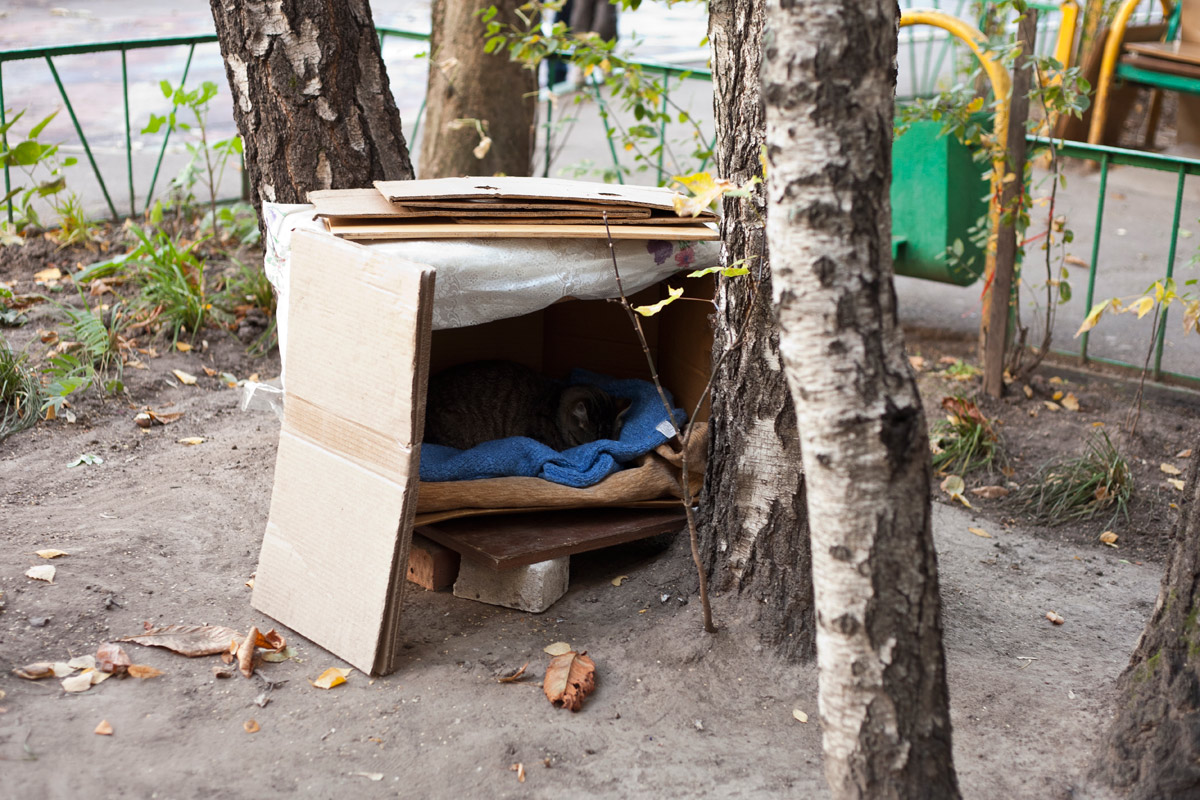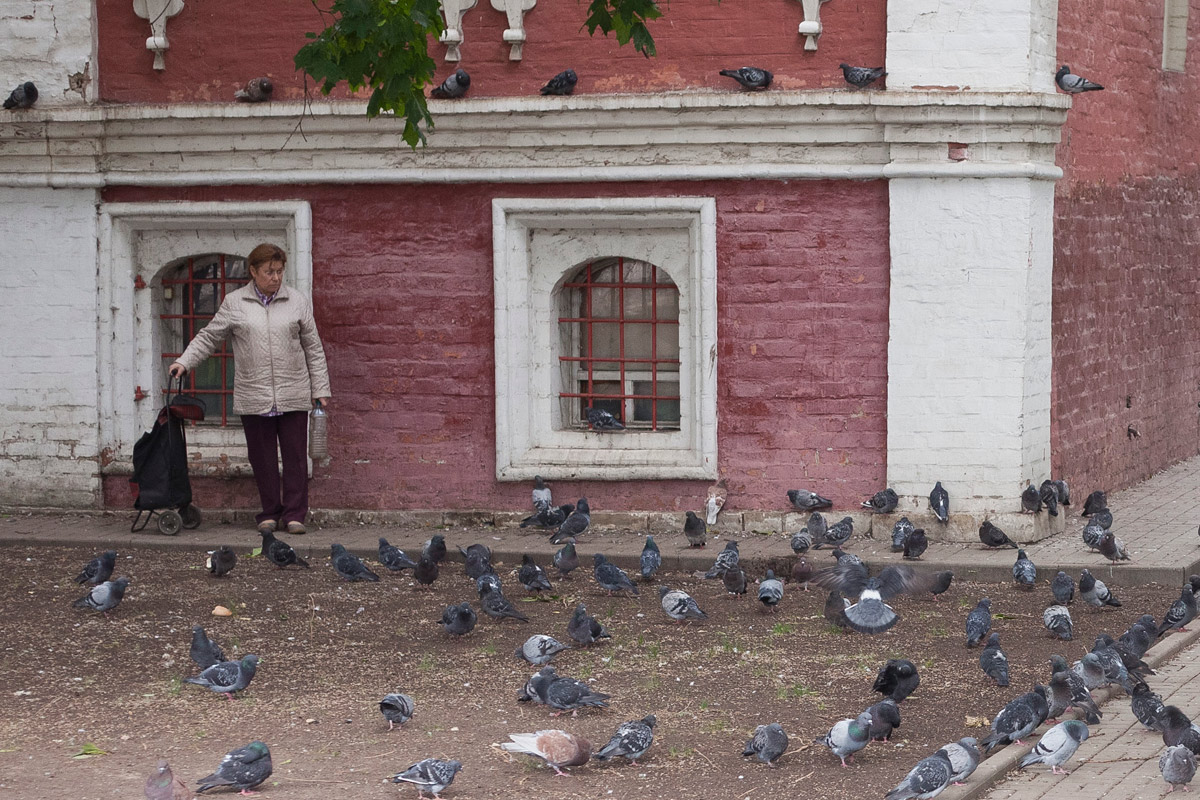The Human Ratio

Life is rough in the concrete jungle; only the strongest survive. Yet when it comes to things like plants or animals, qualities of agility and dexterity trump physical size or brute force. Indeed, we like to think that the city is ours – that it belongs to us humans – but pests thrive in the city much better than us. The city can be alienating and make us feel like we are completely detached from nature, when in fact ‘nature’, the non-human, is all around us. Urban Fauna Lab reports on communities from throughout the globe who look for love in all the obvious places – so obvious we might not think to look.
“I love the fact that human genomes can be found in only about ten percent of all the cells that occupy the mundane space I call my body; the other ninety percent of the cells are filled with the genomes of bacteria, fungi, protists, and such, some of which play in a symphony necessary to my being alive at all, and some of which are hitching a ride and doing the rest of me, of us, no harm.”[1]
Microbial cells outnumber human cells in our bodies ten to one. Ten trillion human cells contain one hundred trillion microbes. The same figures are repeated over and over in pop-science blogs, journals, books and TED talks. A human, only one-tenth human: a clear demonstration of prokaryotic greatness. The ten to one ratio originates from a 1972 paper by Thomas Lucky titled ‘Introduction to Intestinal Microecology’.[2] Lucky wrote that the total number of human cells is less than one individual human, and made a calculation based on an observation of one gram of human feces. The historical progression of the figure’s citation is not clear, but due to multiple repetitions, ten to one became a common expression in biology. The exact number is not so important though:[3] what is is the amazing conclusion that human body is like a city designed and run by numerous generations of both native and nonnative microbiota. The self is a shelter, an office and a playground for multiple other forms of life who outnumber us, ten to one.
If we accept this asymmetrical ratio and shift its realm of application from human intestinal microecology to the scale of contemporary human settlement, we get an image of syn-anthropic urbanism. Birds, mammals, insects and a great deal of other species survive and evolve within urban environments: in public spaces and residential areas, in our apartments and underground. Cities are designed by humans for humans, generally as a shelter, and specifically to reproduce human DNA. Yet our species is the minority in the city, just like cells containing human DNA are in minority in our bodies. Our urban shelter is the host for the entire animal network of chaotic complexity, us included. The more we observe the city as a natural reservoir, the more diversity emerges and the more we can witness the smaller and smaller part in the interspecies game of evolution we humans seem to play. Technically speaking, humans are members of a reciprocal network of urban fauna. Widely speaking, urban design makes local animals like pigeons, cats and foxes acquire and inherit new traits; what was once a source of food becomes commensal, and formerly invasive pests brought to the brink of extinction.
Individual human self-consciousness is limited by the space and time of an individual life; there is no conscious perception at the scale of time and its scientific arrow. We have no particular organs to perceive entropy and genetic heredity. The concept of the extended phenotype,[4] first proposed by Richard Dawkins, helps to frame our urban shelter from an evolutionary perspective. According to Dawkins, the capacity for multiple forms of life to modify their environment with, for example, architectural constructions, is genetically determined; that is, it serves the implicit interest of genes being replicated and not necessarily those of the organism. The composite image of the organism’s observable characteristics – the phenotype – is not limited by the traits of an individual body but includes both its behavior of building shelter and the products of this behavior – beaver dams, caddis houses, cathedral termite mounds, etc., as well as modern human settlements.
The bacterial-like growth of the human population is a clear evidence of our evolutionary success in genetic replication; we (urban fauna) are ourselves an expansive species with the ultimate will for self-preservation. But the bigger our shelter grows, the more alien neighbors are invited into it – the more we get connected to the network. There is no such thing as private property in the history of evolution; shelter always being occupied and reclaimed by others.
The concept of the extended phenotype also includes parasitic manipulation; the ability to modify the host’s behavior to increase the parasites’ own reproductive fitness. Parasitical manipulation is, for instance, the reason why crickets become suicidal and drown themselves when infected by hairworms, a behavior that is essential to the parasite’s reproductive cycle. Maybe some of the cases of inter-specie relations in the modern city, such as casually feeding feral birds and mammals, can be attributed to the category of parasitic manipulation too.


The human body consists of 50% water and 50% weeds found in wastelands, pigeons in the attic, and feral cats in the celling, just to name those that top this endless list. The greatest interest for us is the most common inhabitants of artificial landscapes such as pigeons, ducks, ruderal flora etc. – those synanthropes who are not vulnerable to the modern city’s severe ecological conditions and don’t represent a direct threat to humans. They remain somewhere on the periphery of our attention, emerging from urban waste and dirt in the Aristotelian fashion of spontaneous generation; they feed on the remains of human food and tenderness and are warmed by the excess heat from our homes and subway systems. Flora feed on empty territory, adapting to city wastelands, roofs of abandoned buildings, railroad embankments, and even gaps between pavement stones. Animals and plants turn the city into a natural park by occupying empty space.
There are certain groups of people who elect to become a part of the interspecies game with synanthropes. Mostly retired elderly ladies, they, for example, form strong alliances with local feral cat communities by collectively taking care of them: they schedule their feeding, neuter when needed for population control, build and decorate shelters and give names to numerous generations. Pigeons, conversely, are common to public space where human traffic in the most intense. Piazza San Marco in Venice is a world famous site to play with pigeons, where tourists can feed them and take funny photographs. Once upon a time, pigeons were grown in dovecotes as a source of protein; later, during centuries of careful selection, people created numerous decorative pigeon breeds and they became an object of trade. These street pigeons we have gotten used to aren’t practical in any sense for the human; they appear to us as an excessive accessory to the urban landscape. They use city squares as pastures; come winter or summer, heat or rain, they stand guard for as long as the sun is high, waiting for alms.


Feeding pigeons and cats are two of the most prominent cases of interspecies altruism, which, while being an extremely rare phenomenon in the wilderness, is easily observable in the city. Philosophy, ethology and plant science strongly shape and falsely skew the perception of interspecies relations by objectifying them as purely behavioral functions of competition for resources, reproduction, defense, etc. We believe that the complexity of such relations presented in the city is far beyond such methods of rationalization. In both cases, people deal with hazardous agents: pigeons carry conjunctivitis, chlamydia and the like, and are considered pests by city authorities in most modern settlements. Feral cats are basically an invasive species, harmful to both native biota and themselves, and they carry and spread Toxoplasma gondii, a prokaryotic agent with the capacity to alter human behavior by intervening in the brain’s dopamine reward system.[5] In spite of all this, people from different social statuses around the world are engaged in playing with these animals. A man feeding pigeons in Washington Square Park claims that the temperature of pigeon blood is higher than that of humans, thus killing all of the potentially harmful bacteria. A woman from a wealthy suburb of Detroit makes her way through traffic to the city just to leave a huge bag of cat food near an abandoned building occupied by a colony of feral cats; she prefers this building to be gentrified by them rather than some business enterprise. This kind fostering of pests in the city is the moment when “affiliation with other forms of life”[6] don’t make any functional sense, but are nevertheless real.
The most prominent definition for these animals is parasites. They infest our city, they spoil it with disease and they eat our food. We have become used to the scientific meaning of this word – a predator that gradually consumes its prey while it is alive. But the essence of altruistic interactions between humans and other animals in the city suggests another definition of the word, something much closer to its origins in Ancient Greek satire: παρά σῖτος, a commensal; literally the one who sits in front of you at the dinner table. Parasites were marginal, former slaves, or maybe just poor citizens who were welcome to the feasts of the wealthy to make the crowd laugh, to amuse guests and become a means of communication. “The collective, at the table, makes noise. The collective, finally, can be unanimous starting with this noise.”[7] In return for the noise they produce, parasites are allowed to smell the leftovers from the host’s table as in the economic ritual of potlatch. In his book Parasite, Michelle Serres highlights the historical transformation from parasite to a scapegoat – a subject of extermination but also a means of a ritual offering. In the satire genre, parasites tend to get punished in the end for greed and hypocrisy.


Interspecies altruism in the city is an unconscious attempt towards a pure affiliation with natural agency. It has all characteristics of a cult practice, a continuous ritualistic event happening in the background of the segregation between human and animal. People’s cult of urban parasitism is, to be perfectly honest, but a small contribution with regards to the sheer amount of wasted products, heat energy, territories and even time that make our urban shelter suitable for inhabitation not only for us but also by aliens. Less waste means less interspecies confrontation in the city. Yet what if the action of altruism is also driven by some junk-like rudimental pattern of behavior from a pre-sapient era, like from when our ancestors, in order to protect themselves, had to feed predators and pests to keep them off of the tribe’s territory? This practice ran for long enough to form a habit, a behavioral pattern that may not apply to the current living patterns in our cities, but is undoubtedly still enacted behind the label of a ‘need to care for living creatures’. As a matter of fact, in some parts of the world the public social mechanism of distributing the custodianship of pests is still in operation. On the territorially disputed Shikotan Island, jungle crows represent a risk to fishing enterprises, farms and households; they open tin cans and cut through fences with their beaks. It was impossible to exterminate them, so citizens were forced to feed them in special places. The whole island is divided to districts with a feeding authority that is in charge of preventing this sort of catastrophe by regularly conducting a ritual offering to the powers of nature, impersonated in the form of jungle crows.


The specific animal species here is a variable. It may be cats living in the empty Electrozavod factory buildings in Moscow at the moment when gentrification began and space started getting crowded. There, cats were ousted from the most of the territory, and left behind colossal stench-filled workshops to artists, designers and entrepreneurs. A small minority of them is still present in the factory; the administration couldn’t entirely get rid of the colonies and intervene against the regular feeding of cats by people inside the building. Those cats are not friendly; they have dirty fur, and their life is short. They represent a biological hazard but people are still engaging to nurture them. Such occurrences should be the areas of special ecological concern for urban designers since we are here dealing with complex phenomenon crucial for understanding the evolution of shelter, waste and interspecies animal psychology. Maybe instead of cleaning pests out of the city we can reconsider the conditions of their presence near us. The co-adaptation of species is something that is there to be arranged by designers and artists who can reveal the aesthetic value of wildlife’s expansion into the human-designed landscape and radically broaden the area of application of eco-conscious design. These constructive artistic interventions may change people attitude to pests. A roost for pigeons in public space can prevent them littering on pedestrian paths, for example. In both Europe and the Middle East in medieval times, dovecotes were used to breed pigeons for food; now they could be used as place to feed them in return. The place we share with animals in the city is a field for natural-philosophical observations and an artistic playground for participatory action. In other words, as a laboratory for urban fauna, this is a thought experiment in land use interpretation and the construction site of post-human biopolitical utopia.
References
1. Donna Haraway, When Species Meet (University of Minnesota Press, 2007).
2. Thomas Lucky, ‘Introduction to Intestinal Microecology’, The American Journal of Clinial Nutrition, 25, 12, December 1972, pp.1292-4.
3. The raw number of human body cells ranges from 1.5 to 72.4×10^13, which shows that it’s almost impossible to make a precise calculation.
Eva Bianconi et al., ‘An estimation of the number of cells in the human body’, Annals of Human Biology, 40, 2013, pp. 463.
4. Richard Dawkins, The Extended Phenotype (Oxford University Press, 1982).
5. James Hamblin, ‘Do Cats Control my Mind?’ The Atlantic, December 5, 2013. At: http://www.theatlantic.com/health/archive/2013/12/do-cats-control-my-mind/282045/ (accessed November 1, 2015).
6. Stephen R. Kellert and Edward O. Wilson, The Biophilia Hypothesis (Island Press, 1995).
7. Michelle Serres, Parasite (University of Minnesota Press, 2007)